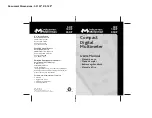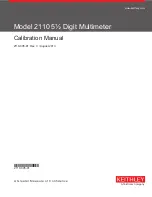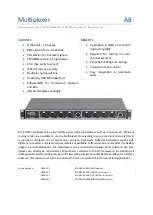
8
English
Diode testing
1. Connect the black test lead to
and
the red test lead to
.
2. Set the multifunction selector to
for measuring diode threshold value (V).
3. Connect the black test lead to the cathode
and red test lead to the anode of the diode
to be tested. Read the forward voltage
drop value from the display. If “1” appears
on the display, reverse the polarity of
the diode.
Warning!
Make sure that the circuit to be tested is not conducting any current before testing diodes.
Take extreme care when using this instrument on an inductive component such as
a transformer, relay coils and the like, and make sure they have been discharged before-
hand. High voltage may be induced at the measuring points if an open circuit occurs.
Note:
A good diode should have a forward voltage drop of from 0.5 to 0.8 V.
However, the reverse voltage drop reading can vary considerably depending on
the resistance to other paths of conductance between the tips of the test leads.
Continuity measurement
1. Connect the black test lead to
and
the red test lead to
.
2. Set the multifunction selector to
.
3. Connect the ends of the test leads to
the ends of the cables to be tested.
-
No break in the cable: The buzzer
sounds continuously if the resistance is
<10 Ω.
-
Break in the cable: The buzzer does not
sound if the resistance is >70 Ω.
Warning!
Make sure that the circuit to be tested is not
conducting any current before testing for
continuity.









































